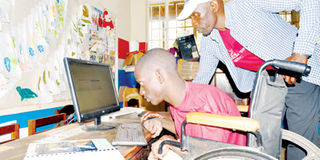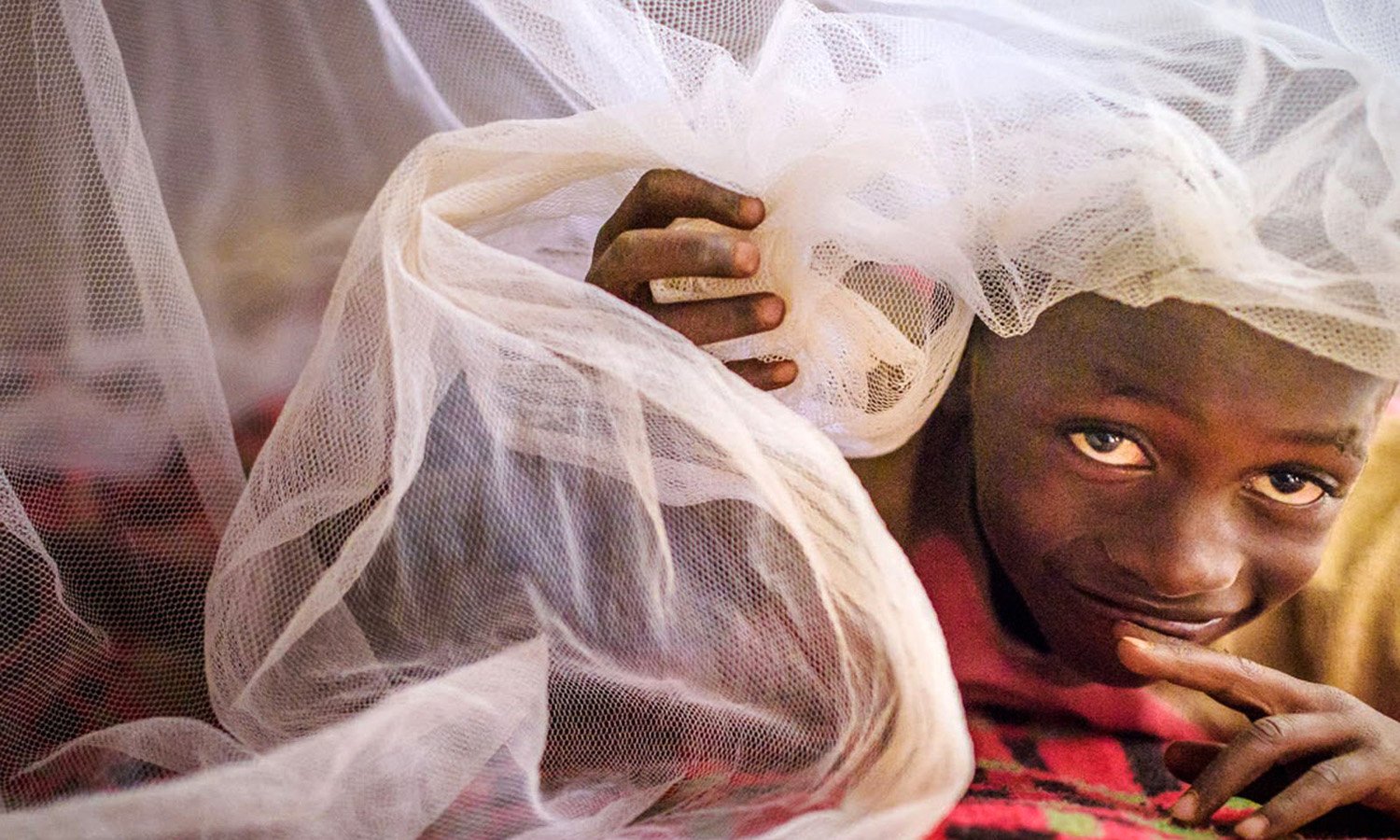Special needs education: Let us think about the teachers

A child with special needs learns computer in Kampala recently. Teachers for such children spend more time training them thus calling for more consideration in remuneration. PHOTO BY RACHEL MABALA
What you need to know:
- About the number of government-aided special needs schools, Onen admits that though he does have the figures, government supports some special needs schools and the rest of the UPE and USE schools are inclusive in nature.
There are more than 50 pupils in Irene Yateesa’s class at Spire Road Primary School, Jinja where she teaches Social Studies. It is an inclusive school and therefore, her class is composed of both ordinary children and those with special needs.
“I personally specialised in hearing impairment (sign language) at Kyambogo University and I have just completed another course in audiology at Mulago hospital to help me understand better the science in my field,” she explains.
The special needs Uganda National Examinations Body (Uneb) examiner has also been teaching special needs children for the last 15 years and is not shy to note that the biggest problem in her class is communication.
“You might have 80 children in an inclusive class. This means you do double the work; explain to the ordinary children, and then sign for the deaf, so they also understand,” Yateesa explains.
Additionally, schools do not provide materials for these children, so as a teacher, she says, she has to find all possible ways to make the child understand. Therefore as she teaches, she uses charts, sign language, finger reading and facial expressions. And since she teaches at an inclusive school, the hearing children often find what she does comic when she is explaining to the deaf ones.
“And whereas I have to do that, the time is never enough because a lesson is only 40 minutes!” Yateesa shares.
Very often, she adds, some schools might have only one special needs teacher or just a few to cover the whole school, which makes the workload enormous. However, with all the work they do, Yateesa sadly notes that the special needs teacher has not been recognised like government recognises science teachers.
“Special needs is a science on its own, because we go deep into the study of the brain. We even go into medical fields to understand how to teach and handle these children,” she argues.
Promote inclusiveness
In a bid to extend education to everyone, the government promoted special needs and inclusive education that would target students with muscular dystrophy, multiple sclerosis, epilepsy, Down syndrome, autism, dyslexia, processing disorders, bi-polar, oppositional defiance disorder, Blind, visually impaired and deaf, among others.
“The present trend of inclusive education and policy thrust embraces modifications in curricular, teaching methods, teaching/learning resources, medium of communication and adjusting the learning environment to meet individual learning needs. It is learner centred, flexible and adjustable to the individual needs and potential of every child,” the department of Special Needs and Inclusive Education provisions and approaches reads in part.
“It is all about changing attitudes, behaviour, teaching methods, curriculum, environment and allocation of human, material and financial resources to meet the educational needs of all learners,” it adds.
In the same spirit, government retained special schools that handle special types of disabilities as well as inclusive schools that have both ordinary and special needs children. Special needs teachers are a priority in both.
However, a number of challenges remain glaring in their faces. “This particular student in my Primary One class has multiple disabilities and uncoordinated speech. When I enter class, after greeting everybody else, I use the local language (Lusamya) to greet and shake his hand,” Lungonia Namwiko, a teacher at Budimo Primary School, Busia shares his daily experiences as a special needs teacher.
Disgruntled lot
After explaining to the class, Namwiko has to do more explanation to the young man.
“If other children are studying numbers and are done learning how to count and write, he is still learning how to count. For now, he can only count from one to nine, and only write from one to four. I carry out individualised teaching with him alone and break down everything,” he adds. To Namwiko, this is real progress in comparison to when the pupil had just come to school and could not take himself to the toilet and would mess himself up often. He had to be trained on that first.
“Currently, when he wants to go, I have to go with him. The best I can do is to teach him self-help skills. If we are teaching about personal hygiene with other pupils, I have to break it down with task analysis such as teach him how to hold a toothbrush, put toothpaste and that he should not eat the toothpaste but rather use it to brush before I launch into details of how he is supposed to brush,” he narrates.
With all the work he has to do, Namwiko is disgruntled that he gets the same salary as ordinary teachers. “We need to be better motivated and people need to care enough about special needs children. There needs to be a special vote for children and special needs teachers,” he says.
In fact Joy Karungi, a special needs teacher at Ntinda School for the Deaf, notes that it is not just the teachers, but the learners too need much motivation.

Children with special needs learn best when they interact with the environment. Their teachers say taking them out of class is an essential part. PHOTO BY RACHEL MABALA
“While teaching you have to motivate the students due to the negative attitude the children themselves and parents towards their education. You also have to employ very demonstrative lessons, take them out of class just to be able to teach them something,” she says.
The teachers who handle both deaf and hard of hearing children also need a lot of patience.
“At school, we use sign language to communicate but many of the parents do not know sign language as well as the people in their environment. So, when they go back home, they cannot be helped. Education support and learning just stop at school, which should not be the case because parents also play a vital role in the education of the children,” says Karungi.
Way forward
Through their umbrella organisation, Association of Special Needs Education Teachers formed in 2017, the teachers recently met in Kyambogo University to share views about how they have been going about their work over the years, and learn from one another. However, like Stuart Oyesigye, the general secretary of the association, says the teachers had a number of other issues.
“In Kenya, for example a little more money is paid to special needs teachers because teaching a child with special needs is hectic and so additional motivation on the job is important, that is why we approach government and development agencies for support,” he says.
Although government supports special needs schools, the introduction of Universal Primary Education in the agenda for inclusiveness consequentially brought big numbers of children with special needs in these schools with a lack of resources.
“When money is being allocated to 30 students for example, government does not put into consideration that some of these might be children with special needs who need things such as desks, buildings to be adjusted to suit them and thus more costs on schools,” Oyesigye says.
Additionally, when you are a special needs teacher, people will often think you are different and associate you with the impairment of your pupils.
“Some people even think that people who sign on television shows are also deaf,” Oyesigye reveals with shock.
Policy on inclusivity
It is also important to note that so far, there is no standing policy to advocate and streamline special needs and inclusive education in Uganda, other than the one being developed.
Negris Onen, the commissioner Special Needs and Inclusive Education, says the National Inclusive Education Policy is currently a draft, and has not yet gone through the organs of the ministry to be presented to parliament.
When asked what details the policy entails, Onen said, “Let it first go through the organs of the ministry.”
Among responsibilities the commission is charged with is to guide and steer stakeholders in the implementation of the policy in line with government regulations and standards.
About the number of government-aided special needs schools, Onen admits that though he does have the figures, government supports some special needs schools and the rest of the UPE and USE schools are inclusive in nature. He also agrees that remuneration of special needs teachers is open for discussion. “I have told them to raise the issue, because I know that every teacher now needs a pay raise. But if there is concrete reason for special needs teachers to be paid more than the others, then that is a subject for discussion.”
Nonetheless, he admits that there are a number of challenges when it comes to special needs and inclusive education.
“There is a limited number of trained special needs teachers. Teaching and learning materials for special needs children and equipment such as hearing aids are also inadequate. Though there is a government project to give out hearing aids, which is ending soon, the demand is bigger. For example, we had initially targeted 1,000 children, but added more yet there is still need,” Onen says.
Amidst all this, Onen is hopeful since these are areas that are being taken care of, and says, “We are building capacities through trainings, procurement of assistive devices, though we should admit that the numbers are big.”




